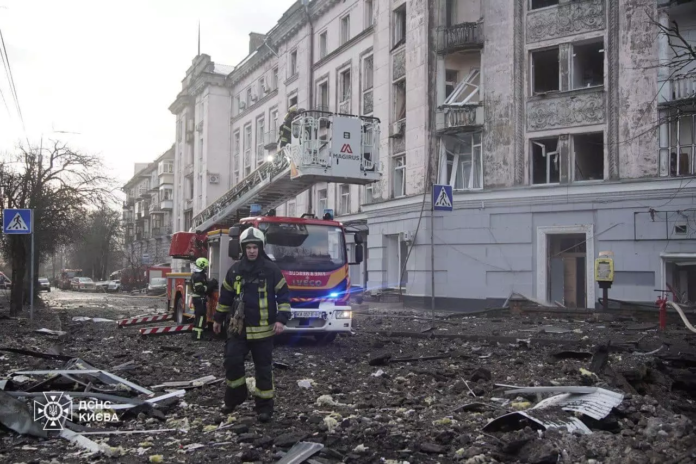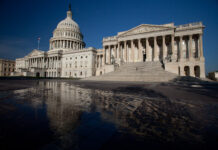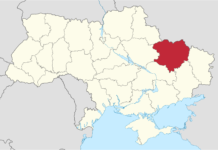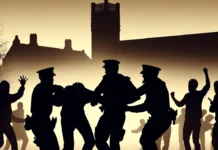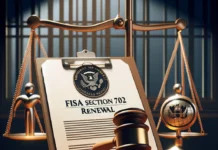Earlier today, Russia unleashed a barrage of missile strikes on Ukraine’s capital, Kyiv, marking the first such mass assault in over a month. According to local officials, the attack resulted in injuries to at least 17 individuals, including an 11-year-old girl, caused by falling debris from the intercepted missiles. The offensive targeted both residential and industrial areas, significantly straining the city’s emergency response capabilities.
The series of strikes, executed using ballistic and cruise missiles, highlights the ongoing and intense conflict between Russia and Ukraine. Serhiy Popko, the head of Kyiv’s military administration, confirmed the launch of about 31 missiles, including two Kinzhal hypersonic missiles. Despite the comprehensive air defense efforts that reportedly neutralized about three dozen enemy missiles, the fallout inflicted damage across various districts of Kyiv. Notably, rocket fragments impacted a kindergarten in the Sviatoshynskyi district, igniting a fire in an apartment building and a car in separate incidents.
The timing of the strikes, occurring hours after White House National Security Advisor Jake Sullivan’s visit to Kyiv, hints at the geopolitical complexities surrounding the Ukraine crisis. Sullivan’s trip aimed to reaffirm U.S. support amid stalled aid from Congress, emphasizing the critical nature of international backing for Ukraine’s defense efforts. The persistent hostilities have heightened concerns over ammunition shortages among Ukrainian forces, spotlighting the urgent need for sustained assistance.
Amid this backdrop, Ukrainian President Volodymyr Zelenskyy appealed for enhanced global unity and the provision of advanced air defense systems to counter Russian missile capabilities. Zelenskyy’s call reflects a broader push for international collaboration to bolster Ukraine’s resilience against ongoing Russian aggression.
On the same day, violence echoed across the border regions, with civilian casualties reported on both sides due to aerial bombardments. These incidents further complicate the already tense relations between the two nations, fueling a cycle of retaliation and escalation that shows no sign of abating.
Russian President Vladimir Putin’s military strategy, evident in the capture of strategic locations in Ukraine’s eastern Donetsk region, reveals a determined offensive posture. The recapture of the village of Orlivka illustrates the shifting dynamics on the ground, emphasizing the challenges faced by Ukrainian forces in repelling Russian advances.
The attack on Kyiv, characterized by its scale and the damage inflicted, signals a deepening of the conflict as it stretches into its third year. The resilience of Ukraine’s air defenses, despite the pressure, offers a glimmer of hope amidst the relentless assaults. However, the path to a resolution remains fraught with uncertainty, as both sides appear entrenched in their positions, with the international community closely watching the unfolding events.
As Ukraine grapples with the immediate aftermath of the latest strikes and the ongoing threat of further aggression, the importance of external support becomes increasingly clear. The struggle for sovereignty and security continues, with the resilience of the Ukrainian people tested by each new wave of hostilities. The world remains a witness to the enduring spirit of a nation under siege, aspiring for peace amid the echoes of war.
Image is licensed under the Creative Commons Attribution 4.0 International license and was created by State Emergency Service of Ukraine.
